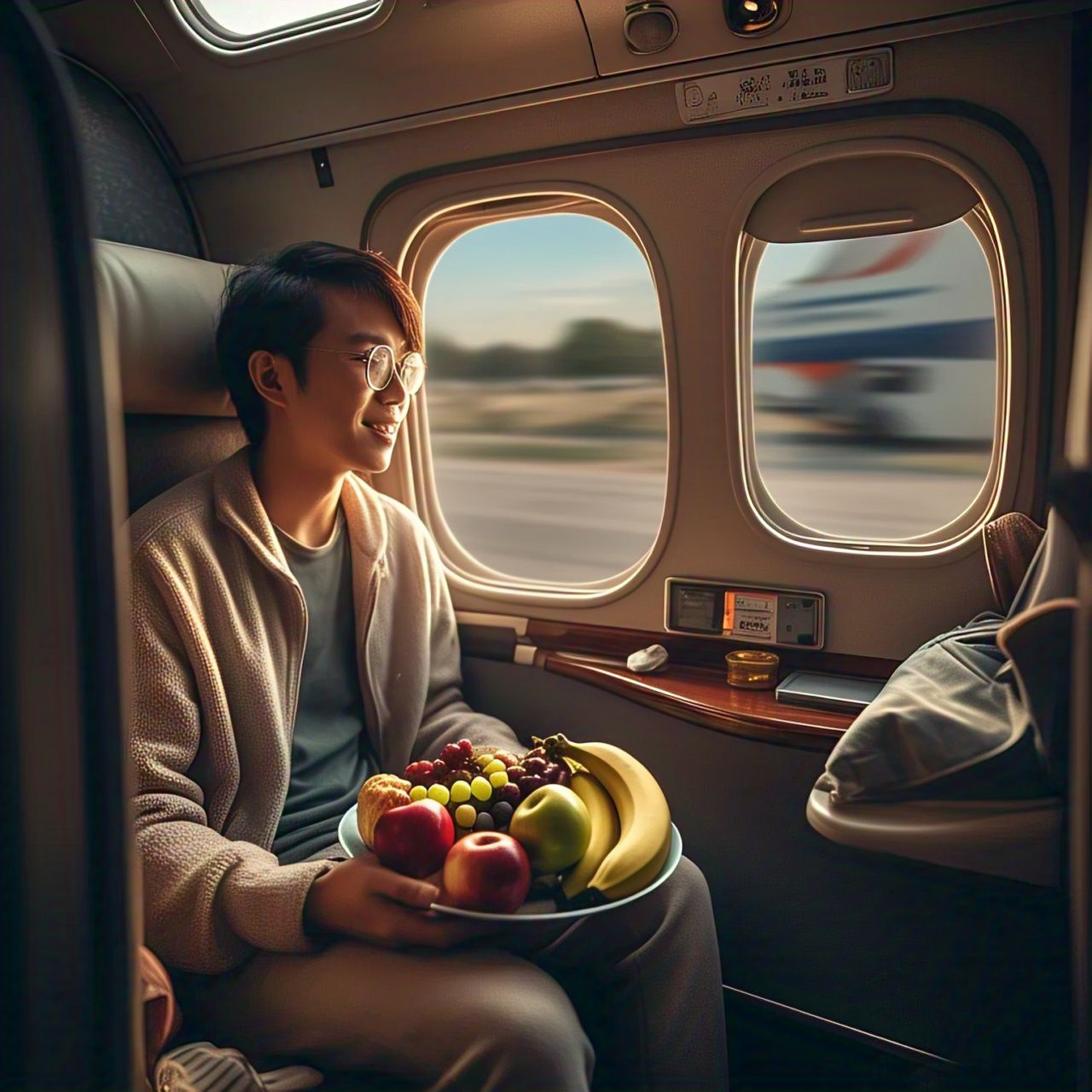Traveling offers a unique blend of adventure and unpredictability—but it can also disrupt your healthy eating habits. Whether you’re flying abroad or on a road trip, maintaining your diet doesn’t have to be difficult. With a little planning and awareness, you can easily eat healthy while traveling and stay energized wherever life takes you.
This guide shares practical tips, expert insights, and research-backed strategies from WHO and Harvard to help you make smarter food choices on the go.
Why It’s Important to Eat Healthy While Traveling
Travel Can Disrupt Your Body’s Rhythm
Long flights, late nights, and unfamiliar foods can wreak havoc on your digestion, metabolism, and immune system. If you neglect your diet, you might feel bloated, fatigued, or sluggish. That’s why it’s so crucial to eat healthy while traveling—not only for energy but also for overall well-being.
What the Experts Say
The World Health Organization (WHO) highlights the need for nutrient-rich, balanced meals to support health in all environments—including while traveling. Similarly, Harvard researchers note that poor eating habits while traveling can increase your risk for cardiovascular issues, weaken immunity, and disrupt gut microbiota.
Plan Ahead for Smart Eating
Research Food Options Before You Travel
Want to eat healthy while traveling without scrambling for meals? Research is key. Check out local restaurants, grocery stores, and healthy cafés before your trip. Apps like HappyCow, TripAdvisor, and Google Maps can guide you toward nutritious options.
Bring Your Own Snacks
Packing healthy snacks ensures you’re not stuck with only fast food. Consider:
- Unsalted nuts and seeds
- Low-sugar protein bars
- Dried fruits
- Whole-grain crackers
- Nut butter in travel-size packs
These snacks help you manage hunger without sacrificing nutrition.
Stay at Accommodations With a Kitchen
Booking a place with a kitchenette gives you control over your meals. Even simple breakfasts like oats, boiled eggs, or smoothies can help you eat healthy while traveling.
Healthy Airport and Airplane Choices
Navigating Airport Food
Airports aren’t just fast-food hubs anymore. Look for:
- Salad stations
- Grilled wraps
- Greek yogurt
- Fruit and veggie cups
These will keep you full and focused during your journey.
Airplane Meal Tips
In-flight meals can be loaded with sodium and preservatives. To avoid feeling groggy or bloated:
- Pre-order low-calorie or vegetarian meals.
- Bring your own meal or snacks when allowed.
- Drink plenty of water and limit caffeine or alcohol.

How to Eat Healthy While Traveling on Road Trips
Choose Your Stops Wisely
Fast food might seem like your only option on the highway—but it doesn’t have to be. Plan your stops near grocery stores, farmer’s markets, or healthy cafés.
Use a Travel Cooler
Pack a cooler with:
- Hummus and veggie sticks
- Pre-cut fruits
- Greek yogurt
- Hard-boiled eggs
- Lean deli meats
This method helps you eat healthy while traveling without hunting for every meal.
Smart Dining Out Strategies
Reading the Menu for Hidden Dangers
When eating out:
- Opt for grilled, steamed, or baked dishes.
- Avoid creamy sauces and fried foods.
- Choose whole grains over white bread or pasta.
- Ask for sauces on the side.
Managing Portions
Restaurants often serve oversized portions. Combat this by:
- Sharing meals
- Asking for half-portions
- Boxing half your meal before starting
Skip the Freebies
Free bread or chips can add hundreds of calories. Politely decline them and save room for your main dish.
Embracing Local Cuisine Mindfully
Enjoying New Flavors Without Guilt
Traveling is a culinary adventure. You don’t have to avoid all indulgences. Just:
- Try smaller portions of richer foods
- Pair them with a fresh salad or vegetables
- Stay active to balance it out
Learn Basic Food Terms
Use translation apps or learn key phrases like “no sugar,” “grilled,” or “no dairy.” This helps you stick to your plan to eat healthy while traveling, even in a foreign country.

Staying Hydrated Is Essential
Why Water Matters on the Go
Dehydration can mimic hunger, increase fatigue, and mess with digestion. This is common when flying or moving through hot climates.
Tips for Hydration
- Bring a reusable water bottle
- Drink water before and between meals
- Limit sugary drinks and sodas
Case Study: A Frequent Traveler’s Healthy Routine
Case Study: Meet James, a 41-year-old sales manager who travels 15+ days a month.
The Problem
James experienced constant bloating, irregular bowel movements, and low energy due to frequent eating out, skipped meals, and dehydration.
The Solution
- James began preparing healthy travel snacks
- Stayed in hotels with a kitchenette
- Used apps to find health-conscious restaurants
- Committed to daily hydration
The Outcome
Within two months, James improved his digestion, energy, and lost 8 pounds—all by sticking to a simple goal: eat healthy while traveling.
WHO’s Global Travel Nutrition Guidance
WHO emphasizes:
- Eating at least 5 servings of fruits and vegetables per day
- Reducing sugar, sodium, and saturated fats
- Avoiding food from unhygienic sources
- Choosing whole, minimally processed options
Travel doesn’t mean compromising your diet. WHO’s global nutrition framework encourages people to maintain healthy eating no matter where they go.
Harvard’s Nutrition Tips for Travelers
Harvard’s School of Public Health recommends:
- Using the “Healthy Eating Plate” model:
- ½ plate of vegetables/fruits
- ¼ plate whole grains
- ¼ plate lean proteins
- Avoiding sugary drinks
- Eating mindfully and stopping when full
This model helps simplify decisions when trying to eat healthy while traveling—even at buffets or unfamiliar restaurants.
FAQs: Eat Healthy While Traveling
What are the best snacks for travel?
Almonds, protein bars, fresh fruit, and dried fruit (unsweetened) are top travel-friendly healthy snacks.
How do I stay consistent on long trips?
Create simple rules like “vegetables with every meal” or “drink 2L of water daily” to guide choices.
Is it okay to indulge in sweets?
Yes, just aim for moderation. Enjoy it, then get back to your healthy choices at your next meal.
Can I eat street food and still be healthy?
Absolutely—just choose vendors with clean, fresh ingredients and avoid deep-fried or overly processed items.
How do I handle dietary restrictions while traveling?
Research ahead, carry snacks that suit your needs, and communicate your preferences at restaurants clearly.
Conclusion:
You don’t have to choose between travel and health. When you plan ahead, stay aware of your food choices, and bring a little structure to your eating routine, it becomes much easier to eat healthy while traveling.
Remember, consistency beats perfection. Allow for flexibility, enjoy the experience, and return home not just with great memories but with your health intact.





